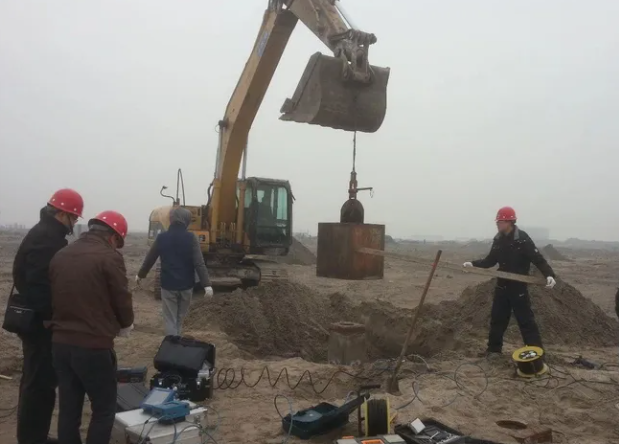The starting time of pile foundation testing should meet the following conditions:
(1) The concrete strength of the tested pile should not be lower than 70% of the design strength and should not be lower than 15MPa, using strain method and acoustic transmission method for testing;
(2) Using the core drilling method for testing, the concrete age of the tested pile should reach 28 days, or the strength of the cured test block under the same conditions should meet the design strength requirements;
(3) The rest time before general bearing capacity testing: sand foundation shall not be less than 7 days, silt foundation shall not be less than 10 days, unsaturated cohesive soil shall not be less than 15 days, and saturated cohesive soil shall not be less than 25 days.
Mud retaining pile should extend the rest time.
Selection criteria for the inspected piles for acceptance testing:
(1) Piles with questionable construction quality;
(2) Piles with abnormal local foundation conditions;
(3) Select some Class III piles for bearing capacity acceptance;
(4) The design party considers important piles;
(5) Piles with different construction techniques;
(6) It is advisable to select uniformly and randomly according to regulations.
When conducting acceptance testing, it is advisable to first conduct integrity testing of the pile body, followed by bearing capacity testing.
The integrity testing of the pile body should be carried out after the excavation of the foundation pit.
The integrity of the pile body is classified into four categories: Class I piles, Class II piles, Class III piles, and Class IV piles.
Type I pile body is intact;
Class II piles have slight defects in the pile body, which will not affect the normal bearing capacity of the pile structure;
There are obvious defects in the pile body of Class III piles, which have an impact on the structural bearing capacity of the pile body;
There are serious defects in the pile body of Class IV piles.
The characteristic value of the vertical compressive bearing capacity of a single pile should be taken as 50% of the ultimate vertical compressive bearing capacity of the single pile.
The characteristic value of the vertical pull-out bearing capacity of a single pile should be taken as 50% of the ultimate vertical pull-out bearing capacity of the single pile.
The determination of the characteristic value of the horizontal bearing capacity of a single pile: firstly, when the pile body is not allowed to crack or the reinforcement ratio of the cast-in-place pile body is less than 0.65%, 0.75 times the horizontal critical load shall be taken;
Secondly, for precast reinforced concrete piles, steel piles, and cast-in-place piles with a reinforcement ratio of not less than 0.65%, the load corresponding to the horizontal displacement at the design pile top elevation shall be taken as 0.75 times (horizontal displacement value: 6mm for buildings sensitive to horizontal displacement, 10mm for buildings insensitive to horizontal displacement, meeting the crack resistance requirements of the pile body).
When using the core drilling method, the number and location requirements for each inspected pile are as follows: piles with a diameter less than 1.2m can have 1-2 holes;
A pile with a diameter of 1.2-1.6m should have 2 holes;
Piles with a diameter greater than 1.6m should have 3 holes;
The drilling position should be evenly and symmetrically arranged within a range of (0.15~0.25) D from the center of the pile.
Post time: Nov-29-2024


